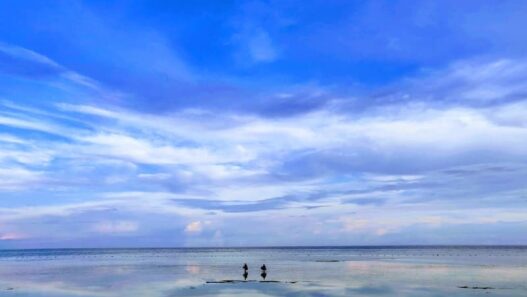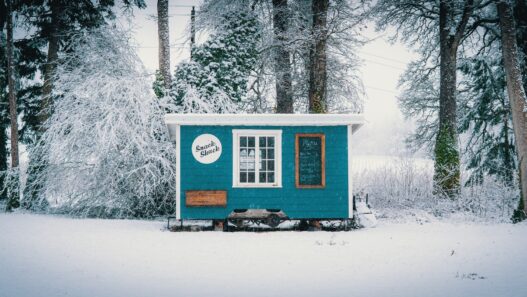Beirut is one of those cities that pulls you in and doesn't let go. Set on the shimmering Mediterranean coast, Lebanon's capital is a striking blend of old and new – where Roman ruins sit just blocks away from rooftop bars, and ancient souks hum alongside contemporary art galleries.
Often dubbed the “Paris of the Middle East,” Beirut is every bit as stylish, complex, and full of soul.
Whether you're into architecture and history, beachside lounging, nightlife, or chasing the latest art exhibit, Beirut's got a little something for everyone. You can explore millennia-old archaeological sites one moment, and discover daring new installations by rising Lebanese artists the next. It's a city that tells its story through both ruins and reinvention.
And if you've got time, consider adding a day trip to Byblos – one of the oldest cities in the world, just an hour away from Beirut. Trust me, it's worth it.
Uncovering Beirut's Ancient Treasures
Beirut, Lebanon
Walking through Beirut feels like flipping through the pages of a history book – only better, because you're right there in it. Beneath the modern skyline, the city hides layers of civilisation that date back thousands of years. From Phoenician remnants to Roman columns and Ottoman architecture, every corner has a story.
Some of the must-visit historical landmarks include the Roman Baths in Downtown Beirut, once a public gathering space during ancient times; Martyrs' Square, a powerful symbol of Lebanon's fight for independence; and Beirut National Museum, home to over 1,300 artefacts that trace the city's rich and complex past.
If you're flying in to explore these ancient wonders, booking with Middle East Airlines makes your journey seamless. The airline offers reliable service and excellent regional connections – perfect for travellers looking to dive straight into Beirut's living history.
Roman Baths
The Roman Baths, which were discovered in the 1960s, used to be a busy place for people to hang out in ancient Beirut. You can walk among the ruins now and imagine the people who used to come here to rest and socialise.
The baths are in the center of town and include well-preserved columns and parts of underfloor heating systems, which give visitors a real sense of the Roman Empire. They're a simple visit and a great place for history aficionados to start their tour of Beirut.
Roman Cardo Maximus
The Roman Cardo Maximus, which was the main road in ancient Beirut, has majestic columns and beautiful mosaics that provide a clue to how big the city used to be.
This major street was the center of business and social life in Roman Beirut, and the relics of it are still quite interesting to see. It's easy to get there from downtown, and anybody who wants to walk in the footsteps of history should go there.
Mohammad Al-Amin Mosque
Mohammad Al-Amin Mosque, Beirut, Lebanon
The Mohammad Al-Amin Mosque, which was finished in 2008, is a contemporary wonder with a lot of cultural significance. You can't miss it since its blue dome and four tall minarets stand out against the skyline. Inside, detailed sculptures and a huge prayer hall that can accommodate thousands of people make the place seem serene. Visitors are welcome at any time of day, and it's close to Martyrs' Square. It's an ideal spot to see how Beirut combines history with resilience.
National Museum Of Beirut
National Museum of Beirut, Lebanon
The National Museum of Beirut is a great place to learn more about Lebanon's history. It has more than 100,000 artifacts, including Phoenician sculptures, Roman mosaics, and Byzantine jewelry, and it covers thousands of years. The Sarcophagus of Ahiram, which dates back to the 10th century BC, is one of the oldest Phoenician inscriptions. It gets more than 100,000 visitors per year, making it a great place for history buffs.
Tip: Give yourself sufficient time to completely explore all three levels.
Baalbek
A day excursion to Baalbek, which is around 85 kilometres northeast of Beirut, is worth the trip outside of the city. The Temple of Bacchus is one of the most impressive Roman temples in the world, and this UNESCO World Heritage Site is home to some of the best-preserved ones. The ruins are so big that they take your breath away when you see them in the Bekaa Valley. You can travel to Baalbek by car or on a trip from downtown Beirut. It has a deep link to the ancient world.
Byblos
Byblos Beach, Lebanon
Byblos is another UNESCO World Heritage Site and one of the oldest towns that has always been inhabited. It has a history that goes back more than 7,000 years. It is about 40 kilometres north of Beirut.
You can spend a whole day exploring its old ruins, medieval castle, and attractive souk. The Phoenician temples and the Crusader-era stronghold on the site are the best parts, and the neighboring harbor makes it seem even better. You can easily get to it from Beirut by taking a planned trip or a short drive.
Beirut's Art Scene: A Modern Masterpiece
Beirut isn't only a city from the past; it's a lively center for modern art and the Middle East's creative heart. The art market in the city has risen gradually, with 15% more galleries opening in the last five years. This shows how important the city has become.
Let's look at some of the wonderful galleries that make Beirut a great place for art aficionados:
Beirut Art Centre
The Beirut Art Centre is a hub of modern art and innovation. It is located in the industrial Jisr el Wati district and has 1,500 square meters of space. It specializes in photography and video, showing works by artists from across the world and from the region. It has more than just exhibits; it also has seminars, screenings, and a mediatheque with a one-of-a-kind digital art archive.
Visit their website to find out about future events and get a taste of Beirut's art scene.
Beirut Exhibition Centre
The Beirut Exhibition Center's exterior is covered with mirrors, which makes it seem amazing in the Waterfront District. Since it opened in 2010, it has held both solo and group exhibits, such as Journey Through Our Heritage, which focused on current Lebanese art.
It connects Middle Eastern innovation with the rest of the globe by working with organizations all across the world. Because of its central location, it is convenient to stop by after seeing the historic places around.
Art On 56th
Art On 56th is a must-see if you want to get a feel for Gemmayzeh's refreshing ambiance. This young gallery, which opened in 2012, is in a historic building and concentrates on modern artists like Rana Raouda, who is renowned for her colorful paintings, and Naim Doumit, who is a sculptor.
It's an ideal place for anyone who likes finding up-and-coming talent since it fosters communication between Beirut and beyond. To really enjoy the neighborhood, stop by a neighboring café for a coffee after your visit.
Janine Rubeiz Gallery
The Janine Rubeiz Gallery, which opened in Raouche in 1993, is a love letter to Lebanese art. It is named for a pioneer of the 1970s art movement and honors both masters and young voices in painting, sculpture, and video. Its involvement in international art fairs has raised the prominence of Lebanese art across the world. It's a peaceful place to enjoy the country's artistic history.
Karen Chekerdjian Studio
Karen Chekerdjian Studio in Beirut Port has a new twist on industrial design. Chekerdjian went back to Milan in 2001 after studying there. She made furniture, tableware, and jewelry out of local resources including ceramics and wood. Her creations have made Lebanese design famous; therefore this studio is a must-see for anybody who loves design. It's not far from the city centre, so it's easy to take a brief diversion.
Nightlife And Cuisine: Beirut's Vibrant Heart
Beirut is more than just ruins and galleries; it's a city that is full of life and energy.
The nightlife of Gemmayzeh and Mar Mikhael is famous, with many fashionable pubs, nightclubs, and live music venues. Rooftop bars in Hamra and other places provide drinks with views of the Mediterranean that go on forever. These are great places to relax after a day of exploring. Visit on a weekend to enjoy a lively experience.
Food lovers will love the food scene in Beirut. Local wines or arak go well with traditional Lebanese foods like hummus, tabbouleh, and kibbeh. French bistros, Japanese sushi bars, and other types of restaurants show off the city's multicultural side. Souk el Tayeb is a weekly market where you may try artisanal foods and fresh fruits and vegetables. It's a sensory way to see how different Beirut is.
The beaches are what make it worth it. Ramlet al-Bayda and Jnah Beach have clean seas and golden beaches that are great for swimming, sunbathing, and water activities like jet skiing. There are a lot of beach clubs where you can eat with a view of the sea. It's simple to get away from the city since it's just a short drive from downtown.
A City Of Resilience And Transformation
Beirut is a sign of strength and tenacity, even if it has had a rough history. No other place can blend old traditions with new energy like this one.
The fact that the National Museum gets 100,000 visitors a year and the art market has grown by 15% over the last five years shows how important it is to culture. This city isn't simply getting by; it's flourishing, full of life and energy.
Beirut is a magical location with old Roman ruins next to modern art galleries, a lively nightlife, and beaches that call to you. One moment you're exploring ancient Roman ruins, and the next, you're tucked into a local café in Mar Mikhael, answering emails with a view of the Mediterranean.
As a digital nomad working remotely, I found it surprisingly easy to slip into a rhythm here – strong Wi-Fi, creative energy, and a constant hum of life all around.
And if you're backpacking through Lebanon, Beirut is an ideal base. It's well-connected for day trips to places like Byblos or Baalbek, and the mix of budget eats, walkable neighbourhoods, and lively hostels makes it a favourite stop for travellers on the go.
Whether you're searching for the best things to do in Beirut, wandering through the city's art galleries, or just looking for a beach escape between work sessions, this city delivers. It's vibrant, welcoming, and full of contrasts that somehow all make sense together.
![Best ESIM For Taiwan [2026 GUIDE]](https://rjema.com/wp-content/uploads/2025/11/Best-ESIM-For-Taiwan-2026-GUIDE-95x95.jpg)
![Best ESIM For Taiwan [2026 GUIDE]](https://rjema.com/wp-content/uploads/2025/11/Best-ESIM-For-Taiwan-2026-GUIDE-527x297.jpg)

















